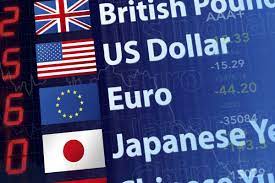The foreign exchange market, commonly known as the forex market or FX market, is a decentralized global marketplace where currencies are bought and sold. It is the largest and most liquid financial market in the world. The forex market enables participants to exchange one currency for another, facilitating international trade and investment. Banks and other financial institutions play a significant role in the forex market. Here are some key aspects of the foreign exchange market:
- Participants: The participants in the foreign exchange market include commercial banks, central banks, investment banks, multinational corporations, institutional investors, retail forex brokers, and individual traders. These participants engage in currency trading for various purposes, such as hedging foreign exchange risks, facilitating international transactions, speculating on currency movements, and managing investment portfolios.
- Trading Mechanism: The forex market operates through an over-the-counter (OTC) network, where participants trade currencies directly with each other or through electronic trading platforms. The market operates 24 hours a day, five days a week, across different time zones worldwide. As a decentralized market, forex trading does not occur on a centralized exchange.
- Currency Pairs: Currencies are traded in pairs in the forex market. The most actively traded currency pairs are referred to as major currency pairs, which include combinations of currencies such as the U.S. dollar (USD), euro (EUR), Japanese yen (JPY), British pound (GBP), Swiss franc (CHF), and others. Currency pairs are quoted with exchange rates that reflect the value of one currency relative to another.
- Spot Market and Forward Market: The spot market is where currencies are bought and sold for immediate delivery or settlement, typically within two business days. In the spot market, currencies are traded at the prevailing market exchange rates. The forward market, on the other hand, involves the trading of currencies for future delivery at a predetermined exchange rate. Forward contracts are often used by businesses to hedge against currency fluctuations.
- Market Influences: The forex market is influenced by various factors that impact currency exchange rates. These factors include economic indicators, central bank policies, geopolitical events, interest rate differentials, inflation rates, market sentiment, and other macroeconomic and political developments. Currency exchange rates are constantly changing in response to these influences.
- Leverage and Margin Trading: Forex trading often involves the use of leverage, which allows traders to control larger positions in the market with a smaller amount of capital. Leverage amplifies both potential profits and losses. Margin trading is a common practice in forex, where traders are required to deposit a small percentage of the total trade value (margin) to open and maintain positions.
- Market Liquidity: The forex market is highly liquid, meaning that there is a large volume of trading activity, making it easy to enter and exit positions. The high liquidity of the forex market ensures that traders can buy or sell currencies at competitive prices without significant price fluctuations.
- Regulatory Oversight: The forex market is subject to regulatory oversight in many countries. Regulatory authorities enforce rules and regulations to ensure fair trading practices, protect investors, and maintain market integrity. Regulation may cover aspects such as licensing of brokers, capital requirements, client fund protection, and transparency in trading.
The foreign exchange market is a crucial component of the global financial system, facilitating international trade, investment, and capital flows. Banks and financial institutions actively participate in currency trading, providing liquidity, market-making services, and trading platforms to market participants.
